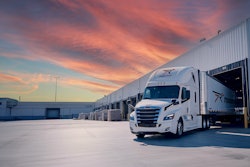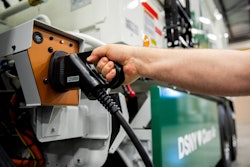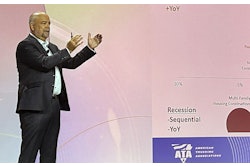Freightliner Custom Chassis Corp. on Wednesday, March 4, introduced the newest addition to its alternative powertrain chassis development program — a pilot hydraulic-hybrid walk-in van chassis. The company says its latest alternative-fuel chassis — launched at the National Truck Equipment Association (NTEA) Work Truck Show — boasts improved fuel economy and less brake wear due to regenerative braking, and is designed and engineered in partnership with Parker Hannifin Corp. to address environmental and cost-savings concerns.
FCCC also announced the availability of new powertrain features at the NTEA show.
Hydraulic-hybrid chassis
“The hydraulic-hybrid chassis not only offers a reduction in operating costs, it also decreases exhaust emissions, providing a substantial environmental benefit,” says Jonathan Randall, director of sales and marketing for FCCC. “As the first chassis manufacturer to launch hybrids into the walk-in van market, we are very proud to continue that tradition by introducing our hydraulic hybrid as another option for customers.”
According to the company, predictions based on preliminary testing have shown that the hydraulic hybrid improves fuel economy between 50 to 70 percent over traditional diesel-powered vehicles with automatic transmissions in stop-and-go applications. FCCC says the hydraulic hybrid improves fuel economy in three significant ways: recovered braking energy; improved engine efficiency; and its engine-off feature.
Built on the FCCC MT-55 chassis, the hydraulic-hybrid system stores energy during the braking process in an accumulator; the energy stored in the accumulator then is used to accelerate the vehicle on the next launch. Upon reacceleration, the vehicle utilizes the energy stored in the accumulator, and once depleted, the engine is restarted.
“The hydraulic hybrid is able to recover and reuse about 70 percent of the energy that otherwise would have been wasted during the braking process,” says Rich Kimpel, engineering manager for the Parker hydraulic group technology and commercialization support team. “On the other hand, typical electric hybrids can only recapture about 25 percent of the brake energy.”
Another feature of the hydraulic system, FCCC says, is that the engine is not connected to the rear wheels of the vehicle, allowing it to run more efficiently as it doesn’t need to track road speed. Furthermore, the advanced engine-off feature is designed to allow the engine to turn off while idling at a stop; the engine only restarts when the energy stored in the accumulator is not enough to meet driving demands.
“The hydraulic hybrid differs from a hybrid-electric vehicle because the accumulators recharge much faster than batteries, while the overall hydraulic system offers nearly 10 times the power density of electric hybrids,” Kimpel says. “This factor also contributes to improved fuel economy by allowing the capture of more brake energy.”
The company says the hydraulic hybrid also requires less traditional friction braking because of its regenerative braking system, resulting in less brake wear and extended brake life. According to FCCC, the regenerative braking system saves energy by recycling and storing it as hydraulic power, which then can be reused to propel the vehicle instead of losing it to heat as is the case with traditional brakes; the friction braking system is used minimally when the regenerative system is working, further extending brake life and lowering maintenance costs.
“FCCC continues to investigate and develop alternative-fuel technologies that are added benefits for our customers,” Randall says. “We’re pleased that in today’s economy, FCCC continues to find innovative ways for customers to decrease their operational costs.”
FCCC and Parker Hannifin developed a prototype hybrid-hydraulic chassis for FedEx Ground in 2008, and are currently running driver evaluation tests. UPS also received a hydraulic-hybrid prototype for fleet testing. “Based on our application, hybrid-hydraulics technology appears to be very promising,” says Taki Darakos, project manager of vehicle maintenance at FedEx Ground.
The MT-55 walk-in van chassis is suited for high-payload applications such as pickup and delivery. FCCC says the durable straight-rail frame is designed to reduce flex and bowing to minimize chassis stress, and the hydraulic hybrid also boasts a 50-degree wheel cut, making the chassis more maneuverable for navigating city streets, narrow loading areas and neighborhoods.
FCCC says the hydraulic-hybrid chassis, powered by the Cummins ISB 2007 engine with 200 hp, does not require a transmission and utilizes Parker’s hydraulic propulsion system.
New powertrain features
FCCC introduced the Vehicle Acceleration Rate Management System (VARMS) and Load-Based Shift Scheduling (LBSS). The company says both systems have been fully tested and validated, and when combined achieve more than an 8 percent increase in fuel economy versus a comparably specified vehicle without these features.
Working with Cummins, testing included the development and validation of the VARMS. FCCC says the new, optimized programming system — implemented for use with the Allison 1000/2000 series transmission — includes a means for programming the vehicle’s acceleration rate and has been integrated carefully with the chassis powertrain components.
Acceleration rate management, which controls the vehicle acceleration rate to a maximum predetermined value, helps provide improved fuel economy and vehicle component life. According to the company, the VARMS is engaged at low speeds to discourage fast starts, thereby improving fuel economy and tire life, and will disengage automatically to allow the vehicle to meet the operational requirements of normal driving conditions.
In addition to the introduction of new engine programming, FCCC says it also worked with Allison to validate and introduce new transmission programming; testing shows that LBSS has been proven to provide additional fuel economy improvements, while not sacrificing vehicle performance.
Using advanced technology to calculate real-time vehicle load and operating grades, LBSS selects the appropriate shift schedule for the task at hand, FCCC says; as the load of the vehicle (physical of increased grade) changes, the transmission calibration can switch between performance-based shifting and economy mode. LBSS is designed to select automatically between an Economy 2200 RPM variable shift schedule or a Performance 2500 RPM variable shift schedule based on the actual load and grade in which the vehicle is operating.
“Our goal was to maximize fuel economy without sacrificing needed performance,” Randall says. “FCCC is committed to bringing new products to market that significantly contribute to our customers’ ROI by reducing their operating expenses.”




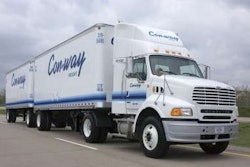


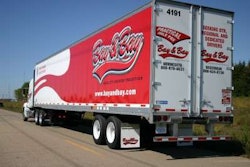

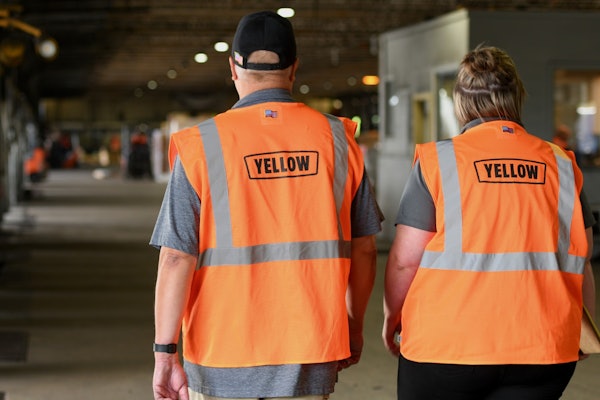
![Volvo Vnl Sleeper Review[20]](https://img.ccjdigital.com/mindful/rr/workspaces/default/uploads/2025/11/volvo-vnl-sleeper-review20.lrVppY9UDR.jpg?auto=format%2Ccompress&fit=crop&h=167&q=70&w=250)
